The military aspects of the Algerian War
Sous-titre
by Professor Frédéric Médard, PhD

In November 1954, the National Liberation Front (FLN) carried out its first terrorist attacks in Algeria. France refused to accept the nationalist character of the uprising, referring only to “events”, while stepping up its military presence and passing emergency laws. But the security situation continued to deteriorate, and “law enforcement” operations turned to all-out war, by the scale of the human and material losses involved.
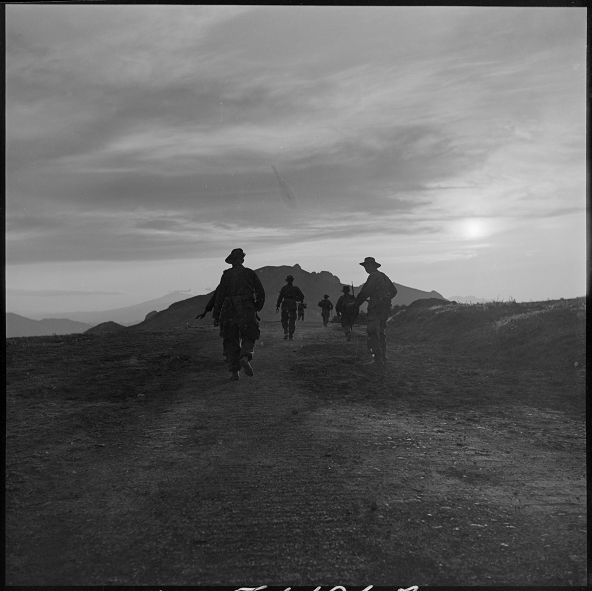
Troops advance through Djebel Guergour at dawn, during Operation Espérance.
© Jacques Durr/ECPAD/Défense
To cater for the growing needs of the Indochinese theatre, the 10th Military Region, which included Algeria, had its forces significantly cut from 1951 onwards. Consequently, at the time of the uprising of 1 November 1954, it had no more than 50 000 men, with fewer than 15 000 of them fit for operations. Its intelligence capabilities had also been neglected. Even so, the French command was confident against this small number of poorly armed “outlaws”, and thought it could contain this latest revolt – over 20 had broken out since 1830 – with the help of reinforcements from metropolitan France
In spite of local successes achieved by the parachute battalions, large-scale “sealing off” and “combing” operations carried out with a heavy deployment of resources produced disappointing results. The groups of fellaghas grew in number, increasing their offensive potential with weapons recovered from the French – 628 individual or crew-served weapons in the first 12 months of the uprising – or which the FLN purchased on the illegal arms market.
By spring 1955, the deployment of additional troops to Algeria had become all the more necessary, as insecurity, initially restricted to the Aurès region, reached Constantine Province and now spread to Algiers Province. In addition to measures linked to the state of emergency, installed on 3 April 1955, the territorial commanders instituted the principle of collective responsibility, an absurd practice in a counterinsurgency conflict, since it means that the army alienates the population. Moreover, security forces were soon accused of using torture to obtain intelligence and of carrying out summary executions. To isolate the interior from the rebellion, prohibited zones were created. As a result, over the years, 2.3 million Muslims were displaced and grouped together in camps.
In June 1955, General Lorillot took over from General Cherrière, while the 2nd Motorised Infantry Division, the first large unit sent from France, was deployed in Kabylia. The 10th Military Region now comprised 160 000 men, largely due to the units repatriated from the Far East. The massacre of 123 Europeans in Constantine Province on 20 August 1955 demonstrates the influence the politico-administrative organisation of the FLN had over the Muslim population. The severe repression that followed did not prevent the growth of the armed groups and a significant increase in terrorist attacks, despite the arrival of 62 000 reservists in September. By the end of 1955, the French Army had sustained over 450 dead and nearly 2 000 wounded, in what were still officially referred to as “law enforcement operations”, though recognition that the victims “died for France” finally began to be awarded from August that year.
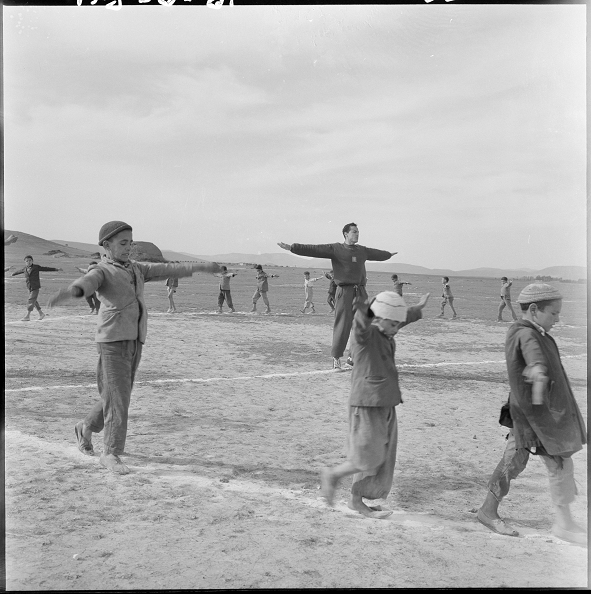
Open-air school organised by the Specialised Administrative Section (SAS) of Boulet, 1958.
© Claude Cuny/ECPAD/Défense
The Algerian crisis accentuated government instability, so that an early general election was held on 2 January 1956. This brought to power Guy Mollet, leader of the SFIO (the French Section of the Workers’ International). Having campaigned on a platform of a negotiated peace in Algeria, he ended up supporting the war effort after the riots of 6 February 1956 in Algiers, when the European Community rejected Algerian independence. Under the Law of 16 March 1956 granting special powers, nearly 100 000 conscripts who left school between 1951 and 1954 were called up again, and the length of time they were legally required to serve in the contingent was increased to nearly 28 months. With its numbers swelling from 300 000 on 1 January 1956 to 460 000 by 1 August, the Algerian army was able, by spreading its forces, to hold as many as 7 500 sensitive points and positions across the country. But the use of inexperienced, poorly trained units led in some instances to tragedy, such as that of 18 May 1956, when a section newly deployed to Algeria was decimated in an ambush near Palestro.
Not only were troop numbers stepped up, hardware was too, with the number of helicopters rising from 75 in June 1956, to 257 two years later. These were used primarily by the “general reserve” units, comprised principally of the two parachute divisions (10th and 25th DP), created in July 1956. Yet this offensive potential was not immediately used to the full. The 10th DP was deployed to the Middle East, where it remained until the end of the year as part of Operation Musketeer, the Anglo-French operation to seize the Suez Canal. However, in the summer of 1956, the military situation continued to deteriorate in Algeria. The insecurity spread to the region of Oranie and spilt over into the Saharan regions, due to a reinforced National Liberation Army (ALN), which now fielded units of over a hundred well-armed men. It had bases in the newly independent Tunisia and Morocco to equip and train them, before sending them to fight in Algeria.
In October 1956, France obtained a short-lived success when it boarded an aircraft carrying five long-time leaders of the rebellion, including Ahmed Ben Bella. Denounced as a hijacking, the operation triggered a diplomatic crisis with Rabat and Tunis, yet failed to paralyse the FLN: the movement was sufficiently well-structured and powerful that it soon appointed a new set of leaders and carried on with the struggle. Nor did their capture prevent urban terrorism from spreading to Algiers throughout the autumn, to the point that the executive had to grant policing powers to the army on 7 January 1957. This transfer of powers marked the beginning of the “Battle of Algiers”, which went on until September. Despite ending in victory for the paratroopers, who dismantled the networks of bombers, this episode of the Algerian War revived the controversy over torture and exposed still further the problem of extra-judicial executions, with the disappearance of over 2 000 suspects, including the university lecturer Maurice Audin.
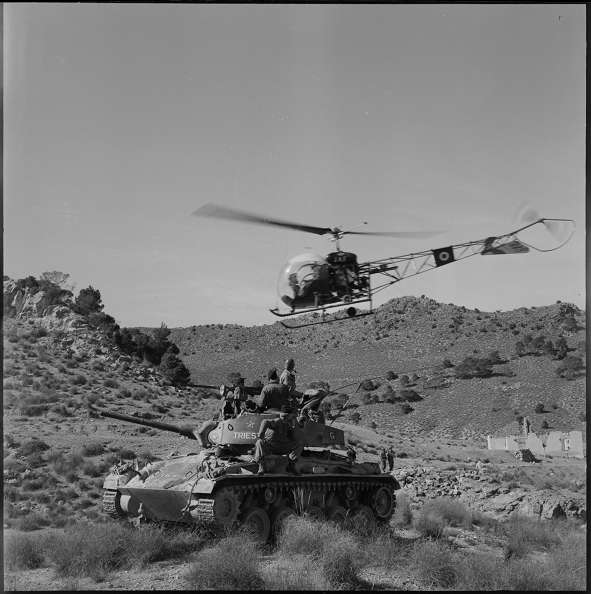
A Bell 47G helicopter and a Chaffee M24 light tank, 1957.
© Pierre Ferrari/ECPAD/Défense
In late 1956, General Salan replaced General Lorillot. The new senior commander of the armed forces took up and developed General Pédron’s idea of building a fence on the Moroccan border, along the RN7 road: first, extending and reinforcing it; then, in June 1957, erecting a similar structure on the border with Tunisia, which was christened the “Morice Line”. The latter underwent continual improvements, until finally being completed at the end of 1957, with two parallel fences built on either side of the railway line. Despite being electrified and mined, the fences were not impassable, but served as an alert and intelligence mechanism for security forces.
The progressive isolation of Algerian territory produced tangible results: after a two-year increase, the number of acts of violence committed by the rebels fell by 25% in 1957. Meanwhile, losses on the rebel side rose from 16 500 in 1956 to 33 000. Importantly, in 1957 the ALN lost more weapons than it seized from the French Army and received from abroad, despite an average of 2 000 weapons entering the country per month. Mindful of the risk of the interior rebel groups being wiped out, in early 1958, the FLN decided to cross the border fences en masse, mainly in the east. The confrontation, nicknamed the “Battle of the Frontiers”, lasted from 21 January to 28 May. The ALN lost 4 000 men and 4 500 weapons, against 1 000 dead in the French ranks, including Colonel Jeanpierre, commanding officer of the 1st Foreign Parachute Regiment (REP). An increase in the number of disruption operations launched from Tunisian soil, where the rebels retreated to subsequently, led the air force to bomb the village of Sakiet Sidi Youssef on 8 February 1958. The air strike hit a market and a school, resulting in 200 civilian victims (72 dead and 148 wounded), including 11 children. President Bourguiba took the case before the UN, putting the Algerian conflict in the international spotlight and intensifying France’s isolation.
More importantly, the war prompted a governmental crisis which, unable to be resolved, became an institutional crisis. Protests in Algiers led the military to issue an ultimatum to the political class, who decided to call Charles de Gaulle back from retirement. The last prime minister of the Fourth Republic returned to the Hôtel Matignon on 1 June 1958, with a mandate to equip the country with new institutions, taking effect from 4 October. In Algeria, where the ALN now fielded around 46 000 fighters, General de Gaulle stepped up the fight against the rebels, while also proposing, on 21 December 1958, a “peace of the brave”, which the new Provisional Government of the Algerian Republic (GPRA), formed on 19 September, rejected.
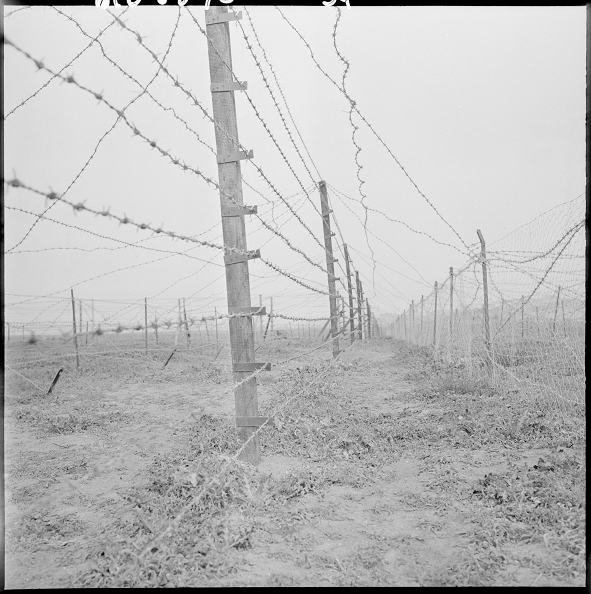
Morice Line electric border fence.
© Photographer unknown/ECPAD/Défense
In December 1958, General Challe was appointed commander-in-chief in Algeria. In February 1959, he launched a large-scale offensive strategy across the country. The plan was to make methodical use of the general reserves by deploying them successively against the bastions of the ALN, in a west-to-east movement, repeating as necessary if the initial operation was insufficient or if the rebels re-established themselves in the meantime. With his air force background, he also developed cooperation between the army and the air force, resulting in more rapid and effective interventions by the security forces. He established the “Commandos de Chasse”, elite counter-insurgency units that led the same lifestyle as the rebels they were pursuing. Finally, he tripled the number of Muslims in the ranks to 210 000. From February 1959 to March 1960, the “Challe Plan” put nearly 48 000 rebels out of action – 33 800 dead and 14 100 prisoners – reducing their numbers to around 22 000.
But the ALN had long since abandoned the idea of liberating Algeria by force of arms: most of its remaining forces, around 30 000 men, were stationed in Tunisia and Morocco, awaiting a diplomatic victory. For, under pressure from the international community and French public opinion, tired of this unending conflict, de Gaulle had begun talks with the GPRA, who remained unbending even in the face of the military putsch of April 1961 and the terrorist attacks of the OAS. The talks culminated on 19 April 1962 in the Évian ceasefire agreements, and the independence of Algeria was proclaimed on 5 July. Even so, the OAS and ALN continued to carry out attacks until September 1962, resulting in the deaths of over a hundred French soldiers, as well as thousands of civilian victims, both Europeans and Muslims.
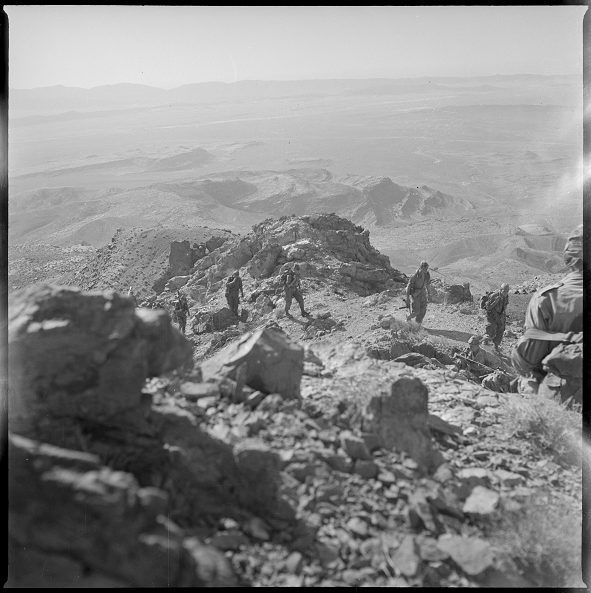
Members of Cobra Commando during an operation in rocky terrain, 1960.
© ECPAD/Smet archive/Arthur Smet
Between November 1954 and July 1962, the operations cost the ALN some 153 000 chouhada (martyrs), including 10 000 who were in fact victims of internal purges and 2 000 who were killed in fighting against the Moroccan and Tunisian armed forces. Over the same period, French Army losses amounted to 25 000 dead (8 000 of them due to accident or illness), 485 missing and 65 000 wounded. In addition to this toll of martyrs were approximately 70 000 Muslim auxiliaries and members of their families, who were murdered by the FLN for serving in French uniform. France spent 54 billion new francs (roughly € 75 billion in 2022) on military operations in Algeria, which, unlike the First Indochina War, was financed entirely by the national budget. However, despite having all the characteristics of a full-scale war in terms of its duration, scale and human cost, the conflict was for a long time considered legally to be a “law-enforcement operation”. It was not until Law No 99-882 of 18 October 1999 that the term “Algerian War”, which had long been in use informally, finally became official, thereby establishing the 1.5 million French soldiers who fought in it as the fourth and last generation of veterans of the 20th century.
Professor Frédéric Médard, PhD

